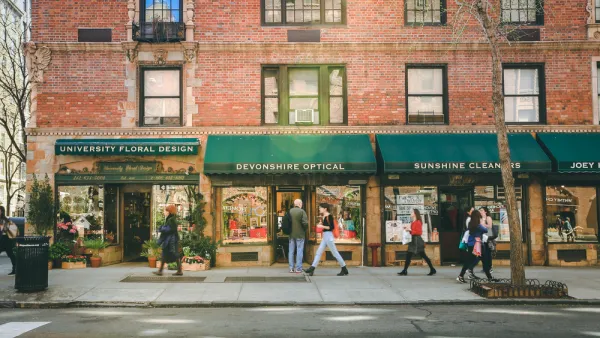A look at how to program social equity into the planning process, and balance NIMBY concerns with collective goals, by Howard Blackson, leader of AVRP SkyPort Studios Urban Design practice in San Diego.
NIMBYISM, i.e., self-interest and the fear of change, is obstructing the development of affordable housing, transit, and more livable communities. However, more rather than less inclusion of NIMBYs is the better strategy. A plethora of new planning tools aid in this strategy. Achieving the optimum balance between self-interests and collective needs is necessary for progress, writes Howard Blackson, leader of AVRP SkyPort Studios Urban Design practice in San Diego. Professional planning ethics, as stated by the American Institute of Certified Planners (AICP), prescribe such balance. Planning for mobility, transit oriented development, and complete streets is the best place to achieve such balance. Additionally, process is as important as design, and design principles are as important as process and design. They are both necessary elements of a balanced approach, concludes Blackson. For more detail, see the source article.
FULL STORY: How to Program Social Equity into Planning Sustainable Communities

National Parks Layoffs Will Cause Communities to Lose Billions
Thousands of essential park workers were laid off this week, just before the busy spring break season.

Retro-silient?: America’s First “Eco-burb,” The Woodlands Turns 50
A master-planned community north of Houston offers lessons on green infrastructure and resilient design, but falls short of its founder’s lofty affordability and walkability goals.

Delivering for America Plan Will Downgrade Mail Service in at Least 49.5 Percent of Zip Codes
Republican and Democrat lawmakers criticize the plan for its disproportionate negative impact on rural communities.

Test News Post 1
This is a summary

Test News Headline 46
Test for the image on the front page.

Balancing Bombs and Butterflies: How the National Guard Protects a Rare Species
The National Guard at Fort Indiantown Gap uses GIS technology and land management strategies to balance military training with conservation efforts, ensuring the survival of the rare eastern regal fritillary butterfly.
Urban Design for Planners 1: Software Tools
This six-course series explores essential urban design concepts using open source software and equips planners with the tools they need to participate fully in the urban design process.
Planning for Universal Design
Learn the tools for implementing Universal Design in planning regulations.
EMC Planning Group, Inc.
Planetizen
Planetizen
Mpact (formerly Rail~Volution)
Great Falls Development Authority, Inc.
HUDs Office of Policy Development and Research
NYU Wagner Graduate School of Public Service




























